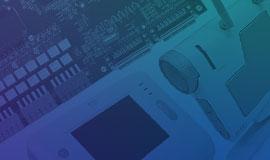By Gwyneth Saldanha | Nov 13, 2015
For Internet of Things (IoT) sensor networks, Nuvation Engineering offers a comprehensive suite of engineering services ranging from architecture design to product development and manufacturing. When designing these solutions, there are some common design challenges that we’ve come across.
Common IoT Design Challenges
1) Low-power design / longer battery life – As IoT infrastructure becomes ubiquitous many use-cases require designing and building low power, low bandwidth, and small form factor IoT sensors and networks. Customers frequently challenge us to deliver longer battery life in ever smaller form factors, with lower volume manufacturing unit costs.
2) Low noise thresholds in small form factors – Many advanced sensors require a low or ultra-low noise floor. This creates an interesting challenge since traditional low noise design approaches cannot be used in a design with requirements for both low-power and a small form-factor. As the power consumption is reduced and the circuit impedance rises, the amount of noise generated thermally in the system increases.

detector to monitor fire hydrants.
3) Low cost/low power wireless communication – When dealing with multiple sensors in an industrial installation, cost per sensor is a key factor in sensor design. Wi-Fi is often rejected as it is not only expensive per sensor but also not suitable for large facilities with potential radio-interfering obstacles like multiple floors, concrete, and steel beams. Cellular is cost prohibitive due to the high fixed cellular modem costs plus high variable monthly cellular subscription costs with a cellular carrier. Bluetooth often doesn’t meet range requirements. Besides the cost considerations, the unlicensed 2.4 GHz band is a power hungry and congested band of spectrum that is sensitive to interference from other systems and emissions.
Solving these challenges has required some innovative thinking. What we’ve learned along the way has made its way into our handbook of best practices.
Best IoT Design Practices
1) Low-power design / longer battery life
- Select the right power/performance processor(s) – Processor selection will not only determine the power and performance limits of the product but also the available footprint for your software implementation.
- Optimize sleep states and waking triggers – On one of our projects, hardware was added to the system to allow the power-down (sleep) of multiple sub-systems when they were not required. During testing of the scheduling that was implemented in the system firmware however, we found that the time required to wake up from sleep mode was too long due to limitations in UART operation. To work around this problem, we re-architected the UART receive line to be edge-triggered during sleep and then dynamically reconfigured as a normal receiver upon wakeup. We also developed a validation environment for this mode using a current meter and a Nuvation Engineering-designed tool to record live measurements to ensure that the product continued to meet the sleep current requirements while the code was developed.
- Deliver the smallest firmware footprint possible – Your choice in processor can limit your available code footprint. Be innovative and optimize your firmware at all stages of the design to allow it to operate within the available memory footprint. As an example, on one of our projects we developed our own customized log based file system requiring only 2KB of RAM to organize data for a 512 Mbytes of NAND flash.
2) Low noise thresholds in small form factors
- Solve challenges through analysis, simulation, and multiple circuit designs – Experiment with alternatives and use simulations to determine best solution.
- Build test tools that enable efficient experimentation – Noise floor measurements are often influenced by both the power supply and the actual components. In the past we have used the firmware to perform an ADC capture and then pass it through a Nuvation Engineering-designed tool to calculate the noise floor based on the various parameters. This data enabled us to optimize the hardware and software configurations to arrive at the lowest attainable noise floor.
3) Low cost/low power wireless communication
%20Designs/IoT-system-design.jpg)
SimpliciTI RF protocol as
a low-cost and low-power
wireless communication
solution for a smart water fountain.
- Use low ISM bands with mesh network topology for better range and low power – Lower frequencies propagate better than the higher frequencies. Choose an unlicensed lower ISM bands to achieve a better range in industrial locations. These bands have a low-data rate but it is usually not an issue for industrial sensor architectures. Using a mesh network topology, sensors using these lower bands can reduce power consumption because each node only has to reach its nearest neighbor. A gateway device can be used to collect and report the sensor data to the upstream network servers. Nuvation Engineering has successfully customized and implemented TI’s SimpliciTI™ RF protocol on multiple projects as a low-cost, low-power wireless solution.
- Modularize design for reuse where possible – Reusing modularizing radio designs on both the sensor and the gateway device reduces costs and schedule, as well as the FCC certification effort.
These best practices have been proven on various IoT designs at Nuvation Engineering and are used as building blocks when considering design approaches for complex IoT products. However it is important to recognize that any process, solution or practice relies strongly on the context or use case of the product. At Nuvation Engineering, we are dedicated to continuous improvement and will keep evolving and improving our best practices as the IoT landscape changes.



